Delta Airlines 2003 Annual Report Download - page 17
Download and view the complete annual report
Please find page 17 of the 2003 Delta Airlines annual report below. You can navigate through the pages in the report by either clicking on the pages listed below, or by using the keyword search tool below to find specific information within the annual report.-
 1
1 -
 2
2 -
 3
3 -
 4
4 -
 5
5 -
 6
6 -
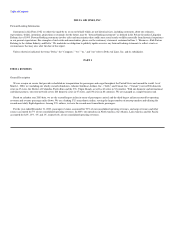 7
7 -
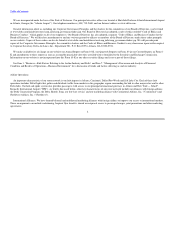 8
8 -
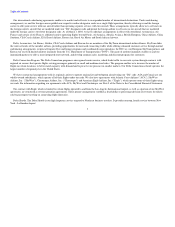 9
9 -
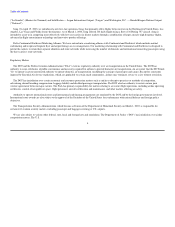 10
10 -
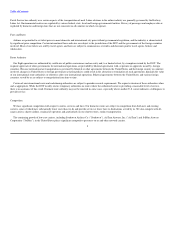 11
11 -
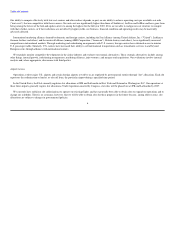 12
12 -
 13
13 -
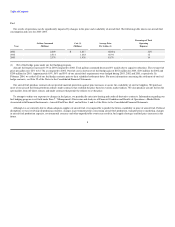 14
14 -
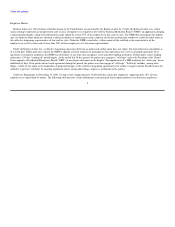 15
15 -
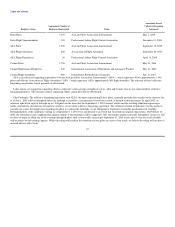 16
16 -
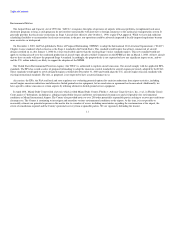 17
17 -
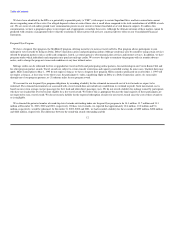 18
18 -
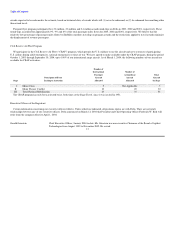 19
19 -
 20
20 -
 21
21 -
 22
22 -
 23
23 -
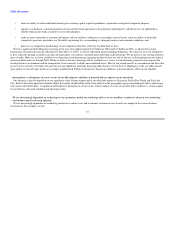 24
24 -
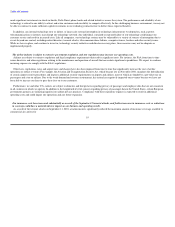 25
25 -
 26
26 -
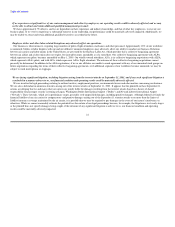 27
27 -
 28
28 -
 29
29 -
 30
30 -
 31
31 -
 32
32 -
 33
33 -
 34
34 -
 35
35 -
 36
36 -
 37
37 -
 38
38 -
 39
39 -
 40
40 -
 41
41 -
 42
42 -
 43
43 -
 44
44 -
 45
45 -
 46
46 -
 47
47 -
 48
48 -
 49
49 -
 50
50 -
 51
51 -
 52
52 -
 53
53 -
 54
54 -
 55
55 -
 56
56 -
 57
57 -
 58
58 -
 59
59 -
 60
60 -
 61
61 -
 62
62 -
 63
63 -
 64
64 -
 65
65 -
 66
66 -
 67
67 -
 68
68 -
 69
69 -
 70
70 -
 71
71 -
 72
72 -
 73
73 -
 74
74 -
 75
75 -
 76
76 -
 77
77 -
 78
78 -
 79
79 -
 80
80 -
 81
81 -
 82
82 -
 83
83 -
 84
84 -
 85
85 -
 86
86 -
 87
87 -
 88
88 -
 89
89 -
 90
90 -
 91
91 -
 92
92 -
 93
93 -
 94
94 -
 95
95 -
 96
96 -
 97
97 -
 98
98 -
 99
99 -
 100
100 -
 101
101 -
 102
102 -
 103
103 -
 104
104 -
 105
105 -
 106
106 -
 107
107 -
 108
108 -
 109
109 -
 110
110 -
 111
111 -
 112
112 -
 113
113 -
 114
114 -
 115
115 -
 116
116 -
 117
117 -
 118
118 -
 119
119 -
 120
120 -
 121
121 -
 122
122 -
 123
123 -
 124
124 -
 125
125 -
 126
126 -
 127
127 -
 128
128 -
 129
129 -
 130
130 -
 131
131 -
 132
132 -
 133
133 -
 134
134 -
 135
135 -
 136
136 -
 137
137 -
 138
138 -
 139
139 -
 140
140 -
 141
141 -
 142
142 -
 143
143 -
 144
144 -
 145
145 -
 146
146 -
 147
147 -
 148
148 -
 149
149 -
 150
150 -
 151
151 -
 152
152 -
 153
153 -
 154
154 -
 155
155 -
 156
156 -
 157
157 -
 158
158 -
 159
159 -
 160
160 -
 161
161 -
 162
162 -
 163
163 -
 164
164 -
 165
165 -
 166
166 -
 167
167 -
 168
168 -
 169
169 -
 170
170 -
 171
171 -
 172
172 -
 173
173 -
 174
174 -
 175
175 -
 176
176 -
 177
177 -
 178
178 -
 179
179 -
 180
180 -
 181
181 -
 182
182 -
 183
183 -
 184
184 -
 185
185 -
 186
186 -
 187
187 -
 188
188 -
 189
189 -
 190
190 -
 191
191 -
 192
192 -
 193
193 -
 194
194 -
 195
195 -
 196
196 -
 197
197 -
 198
198 -
 199
199 -
 200
200 -
 201
201 -
 202
202 -
 203
203 -
 204
204 -
 205
205 -
 206
206 -
 207
207 -
 208
208 -
 209
209 -
 210
210 -
 211
211 -
 212
212 -
 213
213 -
 214
214 -
 215
215 -
 216
216 -
 217
217 -
 218
218 -
 219
219 -
 220
220 -
 221
221 -
 222
222 -
 223
223 -
 224
224 -
 225
225 -
 226
226 -
 227
227 -
 228
228 -
 229
229 -
 230
230 -
 231
231 -
 232
232 -
 233
233 -
 234
234 -
 235
235 -
 236
236 -
 237
237 -
 238
238 -
 239
239 -
 240
240 -
 241
241 -
 242
242 -
 243
243 -
 244
244 -
 245
245 -
 246
246 -
 247
247 -
 248
248 -
 249
249 -
 250
250 -
 251
251 -
 252
252 -
 253
253 -
 254
254 -
 255
255 -
 256
256 -
 257
257 -
 258
258 -
 259
259 -
 260
260 -
 261
261 -
 262
262 -
 263
263 -
 264
264 -
 265
265 -
 266
266 -
 267
267 -
 268
268 -
 269
269 -
 270
270 -
 271
271 -
 272
272 -
 273
273 -
 274
274 -
 275
275 -
 276
276 -
 277
277 -
 278
278 -
 279
279 -
 280
280 -
 281
281 -
 282
282 -
 283
283 -
 284
284 -
 285
285 -
 286
286 -
 287
287 -
 288
288 -
 289
289 -
 290
290 -
 291
291 -
 292
292 -
 293
293 -
 294
294 -
 295
295 -
 296
296 -
 297
297 -
 298
298 -
 299
299 -
 300
300 -
 301
301 -
 302
302 -
 303
303 -
 304
304
 |
 |

Table of Contents
Environmental Matters
The Airport Noise and Capacity Act of 1990 (the "ANCA") recognizes the rights of operators of airports with noise problems to implement local noise
abatement programs so long as such programs do not interfere unreasonably with interstate or foreign commerce or the national air transportation system. It
generally provides that local noise restrictions on Stage 3 aircraft first effective after October 1, 1990, require FAA approval. While we have had sufficient
scheduling flexibility to accommodate local noise restrictions in the past, our operations could be adversely impacted if locally-imposed regulations become
more restrictive or widespread.
On December 1, 2003, the FAA published a Notice of Proposed Rulemaking ("NPRM") to adopt the International Civil Aviation Organization's ("ICAO")
Chapter 4 noise standard, which is known as the Stage 4 standard in the United States. This standard would require that all new commercial jet aircraft
designs certified on or after January 1, 2006 be at least ten decibels quieter than the existing Stage 3 noise standard requires. This new standard would not
apply to existing aircraft or to the continued production of aircraft types already certified. Comments on the NPRM are due on March 1, 2004. All new aircraft
that we have on order will meet the proposed Stage 4 standard. Accordingly, the proposed rule is not expected to have any significant impact on us, and we
and the U.S. airline industry are likely to support the adoption of the NPRM.
The United States Environmental Protection Agency (the "EPA") is authorized to regulate aircraft emissions. Our aircraft comply with the applicable EPA
standards. The EPA has issued a notice of proposed rulemaking to adopt the emissions control standards for aircraft engines previously adopted by the ICAO.
These standards would apply to newly designed engines certified after December 31, 2003 and would align the U.S. aircraft engine emission standards with
existing international standards. The rule, as proposed, is not expected to have a material impact on us.
Air carriers, the EPA, the FAA and local and state regulators are evaluating potential options for emission reductions from airport activities, including
aircraft engine emissions reductions and alternative-fueled ground service equipment, but no conclusion or agreement has been reached. Additionally, we
have agreed to reduce emissions at certain airports by utilizing alternative-fueled ground service equipment.
In April 2001, Miami-Dade County filed a lawsuit, which is titled Miami-Dade County, Florida v. Advance Cargo Services, Inc., et al., in Florida Circuit
Court against 17 defendants, including us, alleging responsibility for past and future environmental cleanup costs and civil penalties for environmental
conditions at Miami International Airport. The County also provided notice to over 200 other potentially responsible parties seeking to recover past and future
cleanup costs. The County is continuing to investigate and remediate various environmental conditions at the airport. At this time, it is not possible to
reasonably estimate our potential exposure in this matter due to a number of issues, including uncertainties regarding the contamination at the airport, the
extent of remediation required and the County's potential recovery from responsible parties. We are vigorously defending the lawsuit.
11
